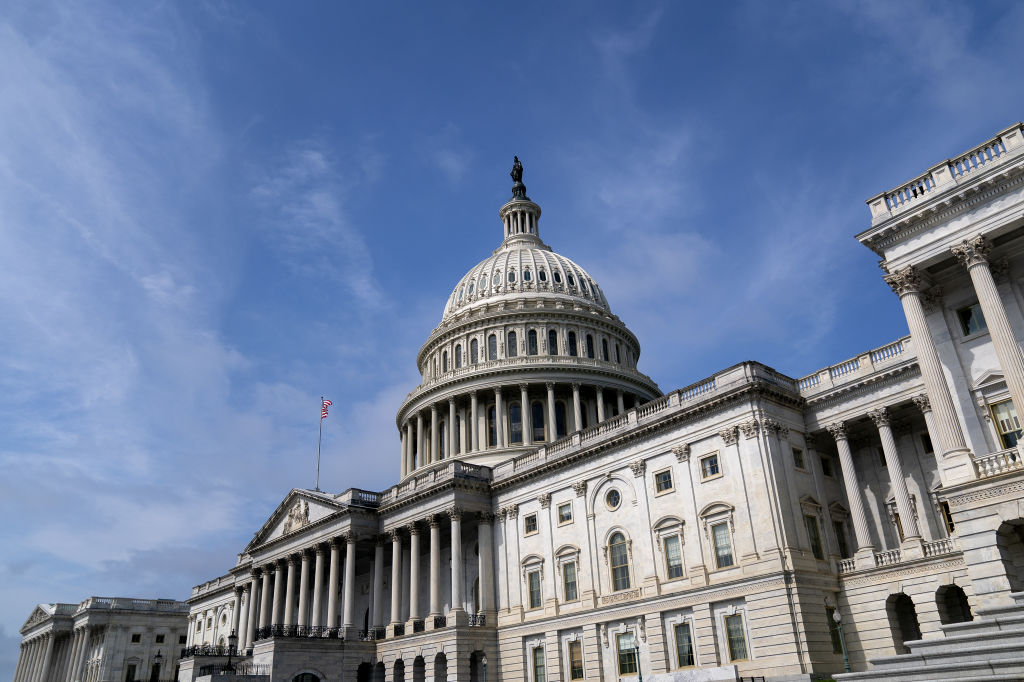
The rate of drug overdoses in the U.S. accelerated during the COVID-19 pandemic, worsening an existing public health crisis, and the numbers are staggering. The Centers for Disease Control and Prevention (CDC) recently reported that more than 93,000 people died from drug overdoses in 2020, the most ever in a single year, and up nearly 30% from the 72,000 deaths in 2019.
We’ve been seeing the effects of these overdoses in our own communities for years. California (which is represented in the U.S. Senate by one of us, Dianne Feinstein) suffered an estimated 9,538 overdose deaths in 2020, up from approximately 4,951 in 2015. The rise in overdose deaths for Iowa (represented by another of us, Chuck Grassley) and its six bordering states are similar: 8,802 last year, up from 4,920 five years earlier.
These increases are primarily due to overdoses from opioids, synthetic opioids such as fentanyl and fentanyl analogues, and psychostimulants such as methamphetamine and cocaine—all of which dramatically increased between 2019 and 2020. Research from the CDC shows that weekly emergency room visits for drug overdoses jumped by 45% last year.
As bad as these death rates are, they will likely continue to rise without immediate intervention by the president and Congress.
The president should develop a coordinated national strategy grounded in evidence-based policies and nimble enough to address emerging problems as they arise. The overdose crisis is constantly shifting, and our response should take that into account.
In addition, Congress must prioritize the issue of drug overdose deaths, much as we have in recent years with the increased abuse of opioids. To help confront the rise in opioid-related overdose deaths, Congress passed three of the largest substance use prevention and treatment focused bills in its history: In 2016, Congress passed the “Comprehensive Addiction and Recovery Act,” which authorized more than $181 million to address the opioid crisis. The same year, Congress passed the “21st Century Cures Act,” which provided $1 billion over two years to assist states combating the opioid epidemic. And in 2018, Congress passed its largest drug-response legislation yet, the “SUPPORT for Patients and Communities Act,” which authorized billions in federal funding to increase access to prevention, treatment and recovery programs and bolster law enforcement.
In 2018, drug overdose deaths declined by about 4%, the first drop in 28 years, according to the CDC. That shows that bills like these, that provide sustained investments in prevention, treatment and recovery programs, can yield results.
With drug overdose deaths again on the rise, we’re seeing that progress is fragile and requires sustained and significant additional action.
The recently enacted American Rescue Plan appropriated $4 billion for substance-abuse treatment and mental-health services. The COVID-19 pandemic has made treatment programs even more necessary, and they should be made available to all who need them.
The president and Congress must also continue pressuring China and Mexico to crack down on the manufacturing of illicit drugs, including fentanyl, which is increasingly being mixed with other substances found in the U.S., such as heroin and cocaine. The Drug Enforcement Administration (DEA) has identified these two nations as closely linked to fentanyl production.
We have made some progress in this area. In 2018, the DEA issued an emergency order banning fentanyl-related substances—essentially knock-off fentanyl and fentanyl analogues under federal law on an emergency basis. Because of this, China also made it illegal to produce these drugs within its own borders. Combined, these actions helped to slow the emergence of new fentanyl-related substances in the United States.
In early 2020, Congress passed legislation to extend the DEA’s emergency order for 15 months, and then again extended it in May 2021 for another six months. Congress should work on a long-term solution to make sure fentanyl-related substances remain explicitly illegal.
Congress must also focus more on methamphetamine overdoses. In 2009, there were 547 psychostimulant overdoses nationwide, many caused by methamphetamine. That figure rocketed to 16,167 in 2019, an astounding 3,000% increase, and those numbers continue to rise. The “Methamphetamine Response Act,” which we introduced in March, would direct the Office of National Drug Control Policy to declare methamphetamine an emerging threat and develop and implement a plan to specifically address abuse of the drug. It passed the Senate but not the House last year; Congress should move quickly to pass that bill year.
Congress also needs to continue supporting state and local governments on the frontlines of the overdose epidemic through investments in initiatives like the Drug Free Communities Support program and the Substance Abuse Prevention and Treatment Block Grant. The Drug Free Communities Support Program helped reduce the use of alcohol, tobacco, marijuana and prescription drugs among middle school students, according to a 2020 program evaluation. And the Substance Abuse Prevention and Treatment Block Grant has helped provide treatment services to 2 million people. These programs have proven track records.
We have a responsibility—and an opportunity—to reverse the staggering number of drug overdose deaths that plague our country. We’re hopeful that Congress and President Biden can take the concrete steps necessary to stem this terrible tide.
More Must-Reads from TIME
- Cybersecurity Experts Are Sounding the Alarm on DOGE
- Meet the 2025 Women of the Year
- The Harsh Truth About Disability Inclusion
- Why Do More Young Adults Have Cancer?
- Colman Domingo Leads With Radical Love
- How to Get Better at Doing Things Alone
- Michelle Zauner Stares Down the Darkness
Contact us at letters@time.com